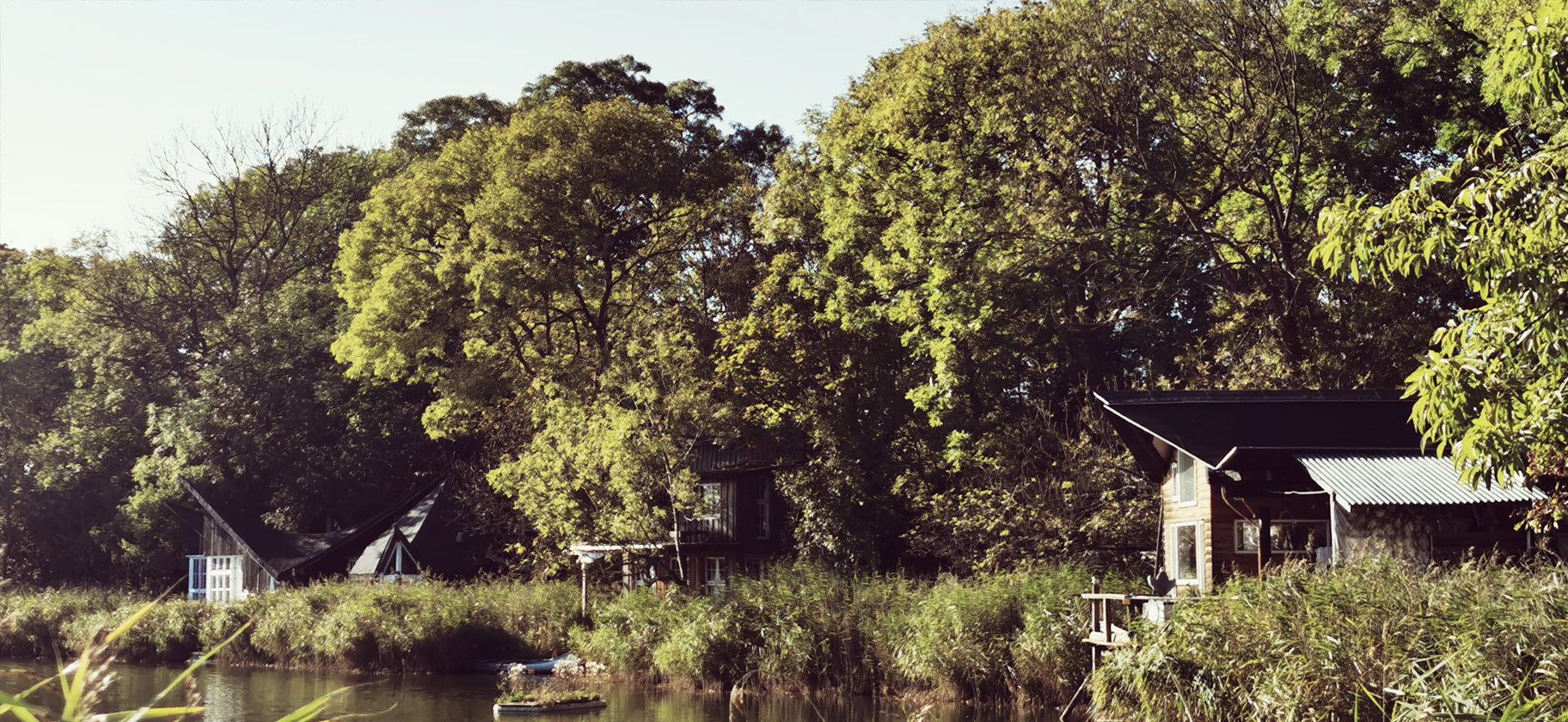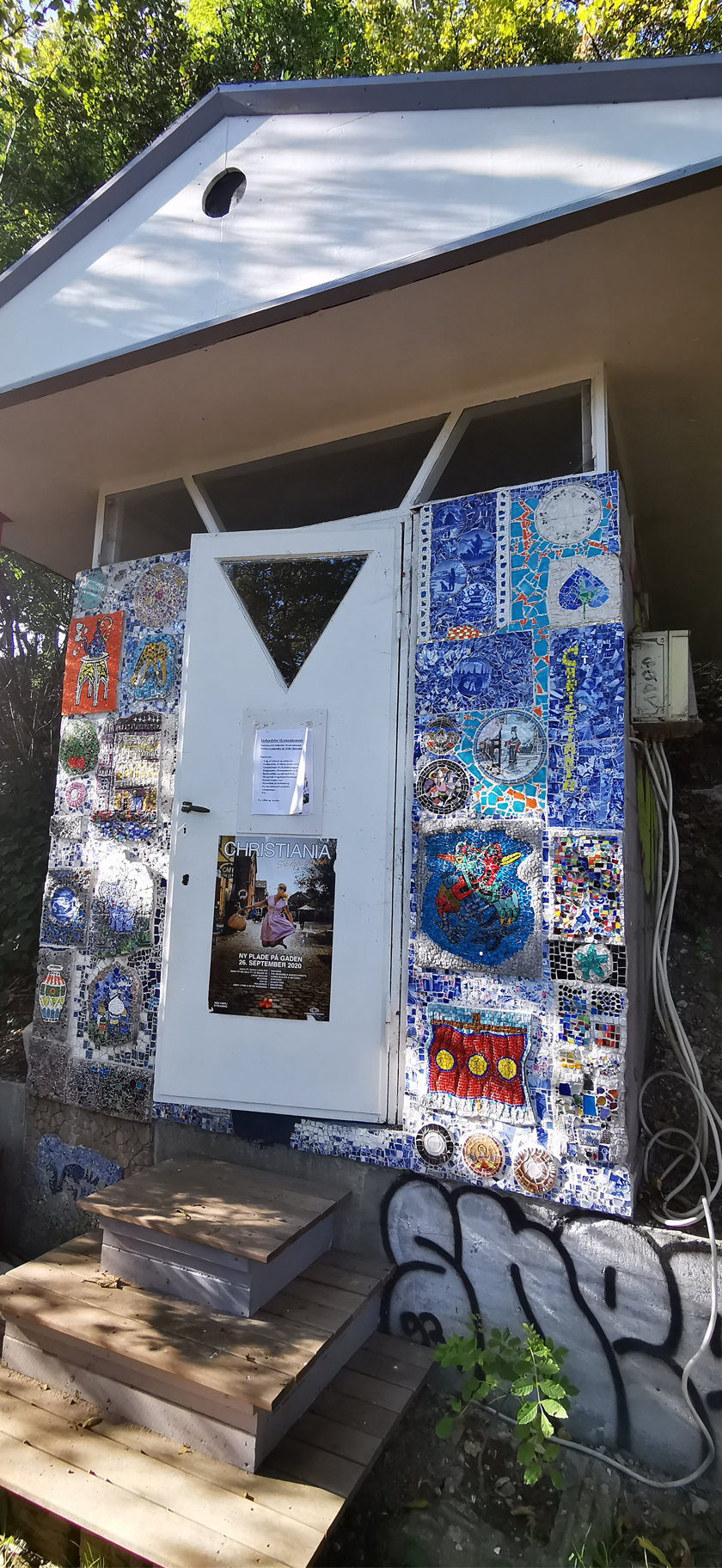The Hermit Homes of Copenhagen

The Inderhavns Bridge traverses the canal from Copenhagen’s famed Newhavn harbour to Freetown Christania on the other side. Heading north to the rapidly gentrifying neighbourhood of Holmen, there are numerous canals that run through the area and a myriad of docks and piers with boats moored along the way and old industrial brick buildings that have been converted into offices, fitness centres, and restaurants. Heading due east and running north-south along a stretch of land between canals – that on a map looks like the spikes of a stegosaurus – is a community of homes along the water connected by a footpath. Copenhagen is a rich and beautifully preserved modern capital city which routinely cracks the top 10 of the most expensive cities in the world, but this quiet and shady stretch of real estate by the water a short walk from downtown, at first glance, appears to be the pick of the crop. The only drawback is the Christania neighbourhood just a half kilometre to the south that connects with the city centre at the Knippels Bridge.
There is a footbridge in the southeast corner that leads into the Amager neighbourhood that is the border for these riverside homes. I paused here for a moment when suddenly a scuffle broke out. One man dropped another straight to the ground. Before hitting the turf, the man on the receiving end of this pile-driver tossed a small Ziploc baggie into the air toward the river. Someone had left a small memorial of wreaths and flowers and a candle by the water and I tried to play it cool by asking someone what the memorial was all about. Pedestrians strode by almost as if nothing out of the ordinary was happening. A man on a bicycle came to assist the man who had done the tackling though he was firmly in charge of the situation and didn’t appear to need any help. I sidled over toward the small plastic bag and glanced up at the man who had been tackled who was now on his knees with his hands behind his head. I made eye contact with him as he motioned with his eyes to me that I should throw the bag in the river. Not my problem, but this man was obviously being shaken down by plainclothes policemen for selling drugs.
Today, Christania is the refuge of alcoholics, gypsies, drug users and bohemians of every variety in a city whose international image is otherwise orderly and squeaky clean. For centuries, the area was a military barracks and fortress responsible for the defence of the city. In the late sixties and early seventies, the Danish military began to dismantle its presence in the area and the homeless began squatting in the land that was technically owned by the government and the neighbourhood has grown around the germinating seeds of these first settlers. Today, the heart of Christania is a collection of graffitied streets, dilapidated apartments, unmaintained parks and an open forum surrounded by cafés and bars where hippies gather and drug deals are carried out. One of the area’s main thoroughfares is even appropriately named, Pusher Street.
 Christania proper is urban, but the wooded area by the water along that spine is peaceful and idyllic. Along the path are many homes that, given their scenic location, one would expect would be owned by some of the wealthiest residents of Copenhagen. But as one gets closer it appears as though each of these homes has been abandoned. Latches are rusted, doors are missing and glass windows are often broken. It takes a minute until you realize that the homes are actually quite small, they are not beautifully designed, and they are not serviced by the main electrical grids or regular roads. Occasionally, you can hear noises coming from the homes as a reminder that people still do live there but very little pride has gone into any kind of maintenance. In many cases, the forest has completely consumed a home or a tree might be growing right through the centre of the house. Many of the homes do not have plumbing and instead, residents rely on the bejewelled outhouse midway along the path.
Christania proper is urban, but the wooded area by the water along that spine is peaceful and idyllic. Along the path are many homes that, given their scenic location, one would expect would be owned by some of the wealthiest residents of Copenhagen. But as one gets closer it appears as though each of these homes has been abandoned. Latches are rusted, doors are missing and glass windows are often broken. It takes a minute until you realize that the homes are actually quite small, they are not beautifully designed, and they are not serviced by the main electrical grids or regular roads. Occasionally, you can hear noises coming from the homes as a reminder that people still do live there but very little pride has gone into any kind of maintenance. In many cases, the forest has completely consumed a home or a tree might be growing right through the centre of the house. Many of the homes do not have plumbing and instead, residents rely on the bejewelled outhouse midway along the path.
It was not until I arrived at the Dysse Bridge at the far end that the community I had just walked through seemed a conspicuous aberration. Here was an area of the city with the potential to be as picturesque as Newhavn but somehow the real estate market had not caught on to what it could be. How were the homes in this neighbourhood not stately mansions with sailboats? Why, instead, were they oddly thrown-together and erratic cheap wooden sheds that nobody seemed to care about maintaining? The answer, it turned out, was socialism.
Exactly why this was the case was explained to me by my housemate, a proud Dane and Copenhagen resident of more than 30 years, Uffe. It seems that that government land, in the 50 years since the military disbanded from the area, had never been sold off to developers. No doubt, a fortune could be made by developing the area but it seems that the Danish government has no intention of selling off the property nor cleaning up the area. Instead, the Danish government is happy to have its residents of Christania just as they are and right where they are.
“I love Christania!” Uffe explained. “Don’t get me wrong, I don’t want to go there but I am glad that it is there.”
I asked Uffe if there had ever been proposals to develop the area.
“Of course!” he replied. “Do you really think people can’t see the economic potential of that area?”
“Then how on Earth has nothing ever been done?” I asked.
“Because the Danish government sees the benefit of keeping Christania just as it is.”
According to several people I asked, narcotics sales are illegal in Denmark but, by all accounts, it is tolerated in the Christania area. There is a semi-regular police presence that occasionally enters Christania in force with the effect of dispersing all of its day-trippers and nighttime transients who simply flood back into the area the next day as if nothing had happened. Plainclothes cops still patrol the area and busts occur regularly, but they are swift, tactical and discrete.
“Christania works,” Uffe explained. “Not everybody wants to live this way like you and I are living here in the city – simple and quiet. Some people want to do drugs and bang on their drum until three o’clock in the morning. For those people there is Christania. They go and they live there and they do all of their crazy things because they are allowed and they don’t have to worry about people like me asking them to stop and be quiet. They can just live as they want. And then the rest of us who wake up when the sun comes up and go to work, we don’t have to put up with their noises and we can just carry on with our lives. It’s socialism – it works”.